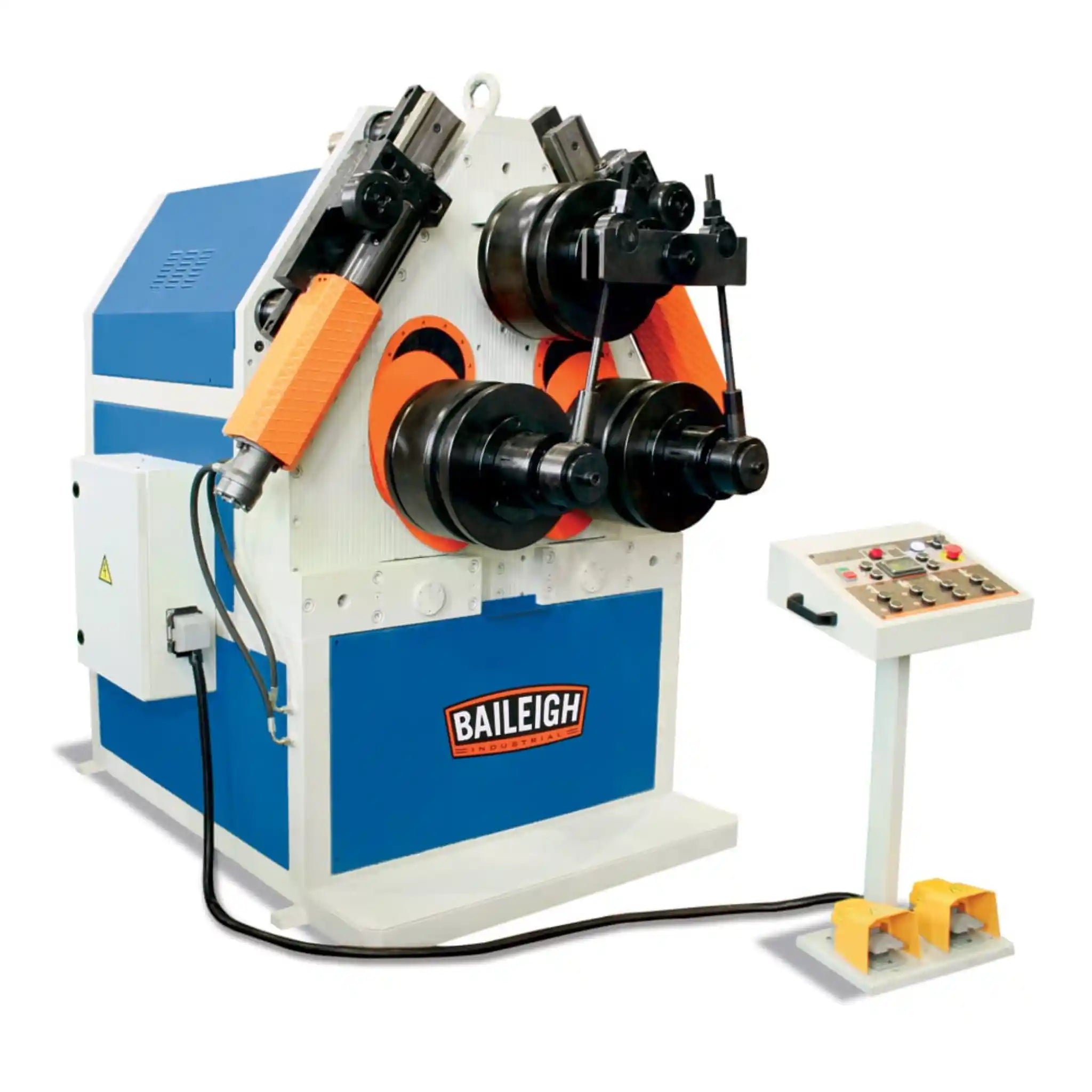
Baileigh R-H150 Roll Bender
Why Shop With Us?
✅ Free UK Delivery
✅ 30-Day Easy Returns
✅ Price Match Guarantee
✅ Manufacturer’s Warranty

Why Shop With Us?
✅ Free UK Delivery
✅ 30-Day Easy Returns
✅ Price Match Guarantee
✅ Manufacturer’s Warranty
The Baileigh R-H150 is Baileigh Industrial's largest and most powerful hydraulic roll bender, designed to handle massive bending projects with precision and efficiency. Built for heavy duty fabrication, this Portuguese engineered machine eliminates material waste while delivering professional results on even the most demanding structural applications.
When you're working with large scale fabrication projects, you need equipment that won't let you down. The R-H150 hydraulic roll bender is built to be your workhorse, capable of rolling up to 140mm (5.5") pipe and handling substantial angle iron up to 120mm x 6.3mm. But here's what really sets this machine apart: it's not just about raw capacity.
This is a true double pinch design machine, which means you can pre-bend and post bend your material. What does that mean for you? It means you're saying goodbye to those frustrating straight sections at the beginning and end of your bends that waste your material and your money. With three driven rolls powered by a robust 20 hp motor and independent hydraulic control of the two bottom rolls, you get the precision and repeatability that production work demands.
The R-H150 features a heavy duty steel plate frame that's both bolted and welded, ensuring zero flex even when you're pushing the machine to its full capacity. You can operate it vertically for standard work or lay it on its back horizontally for large radius jobs and long material sections. The movable operator podium puts all your controls right where you need them, with an intuitive digital readout showing exact roll positions and foot pedals for directional control. Whether you're in a structural steel shop, shipyard, or custom fabrication facility, this machine is designed to handle your toughest bending challenges day after day.

| Model Number | R-H150 |
|---|---|
| Country of Manufacture | Portugal |
| Driven Rolls | 3 (all hydraulically powered) |
| Roll Adjustment | Hydraulic |
| Pipe Capacity | 140mm (5") dia., 5mm wall / Min. Dia: 1m |
| Round Tube Capacity | 159mm (6.25") dia., 3mm wall / Min. Dia: 2m |
| Square Tube Capacity | 102mm (4") x 102mm (4"), 5mm wall / Min. Dia: 2m |
| Motor Power | 20 hp (15 kW) |
| Pinch Type | Double Pinch |
| Digital Readout | Yes (programmable with stops) |
| Power Requirements | 400V, 3-phase, 50Hz |
The specifications are based on 60,000 PSI mild steel. You can work with harder materials or stainless steel, but you'll need to reduce the maximum thickness or diameter. Contact Baileigh's technical team to discuss your specific material requirements and they can help calculate the appropriate capacities.
The R-H150 comes standard with segment rolls that handle flat bar, angle iron, and square tube. For round tube, pipe, and specialized profiles, optional tooling sets are available. Many applications work perfectly with the standard tooling, but custom or specialized shapes may benefit from profile-specific rolls.
You'll need approximately 3 meters x 2.5 meters of floor space, plus additional clearance for material handling. The machine can operate vertically (standard) or horizontally (for large radius work), so plan for adequate overhead clearance or floor space depending on your typical applications. Don't forget to account for electrical requirements: 400V three-phase power supply.
Most experienced fabricators can begin producing quality bends within a few hours of training. The digital readout and programmable stops make repeatability straightforward. Baileigh provides comprehensive operator documentation and lifetime technical support to help your team get up to speed quickly.
Traditional single pinch roll benders leave straight sections at both ends of your bend because they can't effectively grip the material at the start and finish. The R-H150's double pinch design lets you pre-bend the leading edge and post-bend the trailing edge, virtually eliminating these waste sections. On long production runs, this can translate to significant material savings.